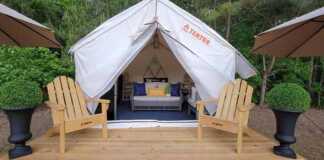Nebraska may not be a travel destination visitors flock to, but there’s no denying that visiting this lovely state is a good way to discover some of the country’s best-kept secrets. The state has distinctive features, including the Sand Hills, part of the Great Plains and more miles of river than any other U.S. state.
Although there are no national parks in Nebraska like the most well-known ones in the country, there are five lovely national park sites to explore, including a historical park, scenic rivers, and national monuments. The national park sites in Nebraska showcase cultural treasures and the state’s natural beauty, providing visitors with a thrilling experience throughout their visit.
Also read:
Contents
5 National Parks in Nebraska
1- Scotts Bluff National Monument
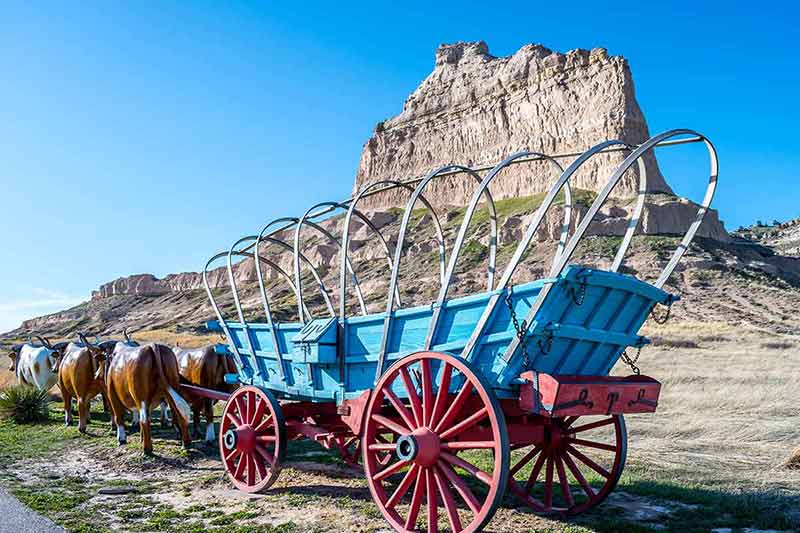
Scotts Bluff National Monument in western Nebraska was an important landmark for emigrants on the Oregon, California, and Pony Express Trails.
Established in 1919, this national monument protects more than 3,000 acres (1,214 ha) of mixed-grass prairie, rugged badlands, towering bluffs, and relics of historic overland trails along the North Platte River.
This was the second most mentioned landmark on the Emigrant Trails in pioneer journals and diaries.
Scotts Bluff National Monument was named after Hiram Scott, a clerk for the Rocky Mountain Fur Company, and it has a rich geological and paleontological history, as well as human history.
This national monument is one of the few sites in the Nebraska Panhandle where wildlife is protected in a natural environment.
It is home to numerous bird, fish, amphibian, mammal, and reptile species.
Migrating bird species use the monument as a stopover site for rest and feeding.
Animals found here include mule deer, coyotes, prairie dogs and rattlesnakes.
The park also contains various plant species, such as Soapweed Yucca, Winterfat, Rocky Mountain Juniper, Plains Prickly Pear, and Ponderosa Pine.
Things To Do
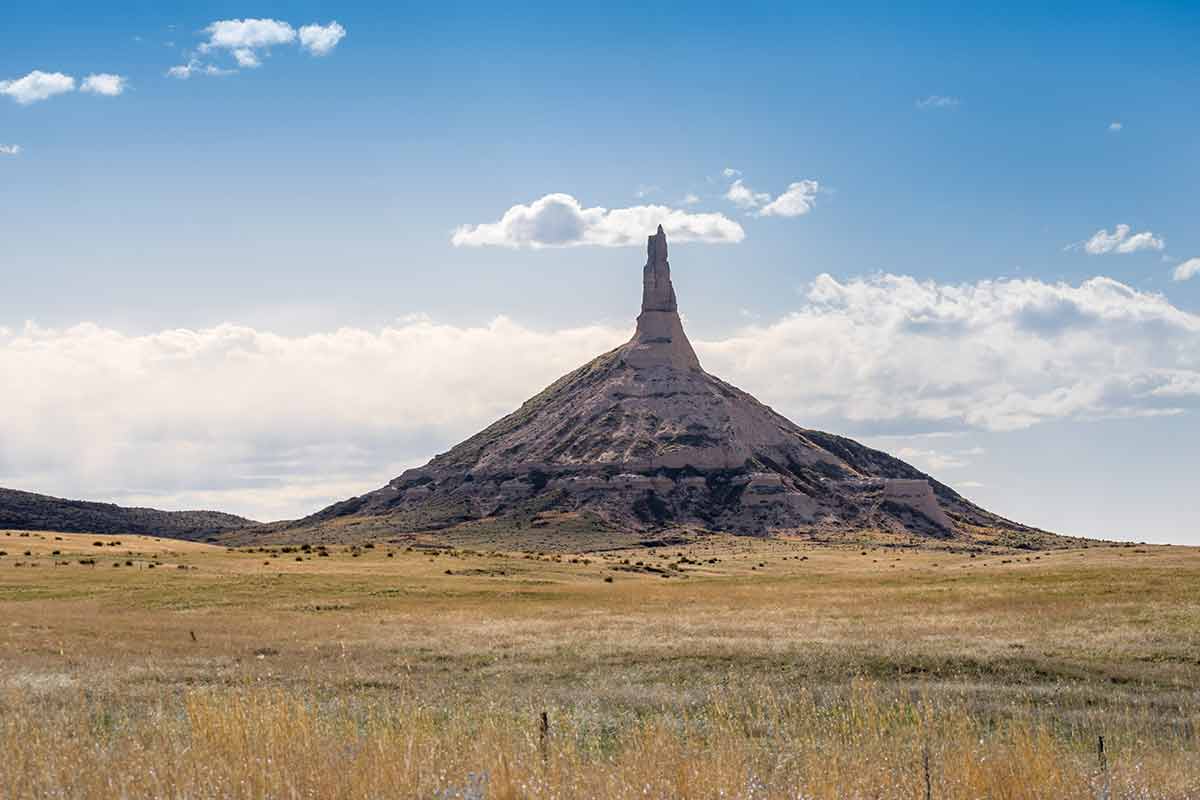
Go Hiking
With approximately 4 miles (6.4 km) of hiking trails, Scotts Bluff National Monument is an excellent place to enjoy the health benefits of exercise and fresh air.
The 1.6-mile (2.6-km) Saddle Rock Trail, a favourite trail among locals with a 435-foot (133-m) elevation, connects the monument visitor centre to the peak of Scotts Bluff.
Drive the Summit Road
Visitors can drive the 1.6-mile (2.6-km) Summit Road, which begins in the parking lot of Scotts Bluff Visitor Center.
It is Nebraska’s oldest concrete road and features the only three auto tunnels in the state. It has lovely views of the surrounding landscape and interesting geology.
Attend a Ranger Programs
During the summer, visitors can learn more about Scotts Bluff National Monument by participating in a ranger-led program.
Park rangers are available to teach visitors more about the trail emigrants, the western fur trade, plants, animals, and geology of this unique place.
View William Henry Jackson’s Collection
A selection of William Henry Jackson’s collection is on display in the visitor centre for visitors to admire.
William Henry Jackson was a well-known western painter and photographer whose photos of the area around Yellowstone inspired the founding of the world’s first national park, Yellowstone National Park, in 1872.
How To Get There
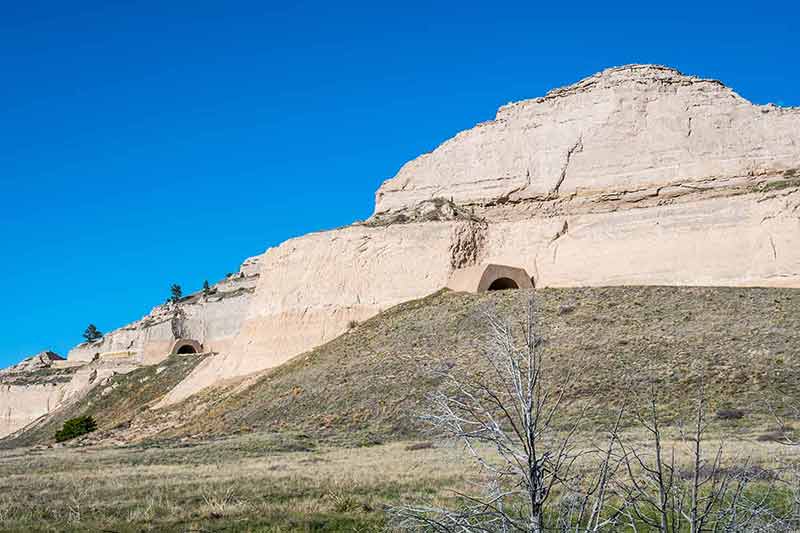
Visitors travelling east-west on Interstate 80 can exit at Kimball, Nebraska, and drive 45 miles (72 km) north on Highway 71.
Follow National Park Service signs three miles (5 km) west of Gering, Nebraska, on the Old Oregon Trail (State Highway 92 West).
Visitors following Old Oregon Trail along the North Platte River using State Highway 26 or 92 should follow the National Park Service signs.
2- Niobrara National Scenic River
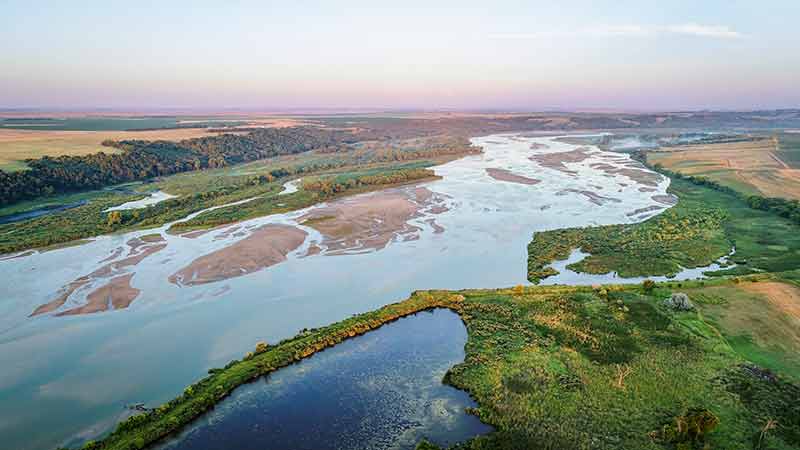
Niobrara National Scenic River is in north-central Nebraska, about 300 miles (480 km) northwest of Omaha.
The Niobrara River, which runs for 76 miles (122 km) east of Valentine, became part of the National Wild and Scenic River system in 1991.
Niobrara is one of only a few rivers in the United States that is protected by the federal government and deserves special recognition.
While visiting this beautiful park in Nebraska, there are numerous possibilities to enjoy the outdoors with loved ones, learn about the history of Niobrara, and participate in great recreational activities.
The stunning cliffs, waterfalls, variety of plants and animals, and paleontological richness combine to make a visit the Niobrara an unforgettable experience.
This river’s distinctive geological formations contain fossils of various animal species, including beaver, horse, rhinoceros, and mastodons, as well as fish, alligators and turtles.
Beavers, bull snakes, turkeys, coyotes, foxes, and white-tailed and mule deer, frequently spotted along the river, are just a few of the remarkable species that inhabit the area.
Some animal species such as Bailey’s eastern woodrat and the Olive-backed pocket mouse, are endemic to the park.
The river also supports endangered and threatened species, including whooping cranes, bald eagles, the interior least tern, and the piping plover.
Things To Do
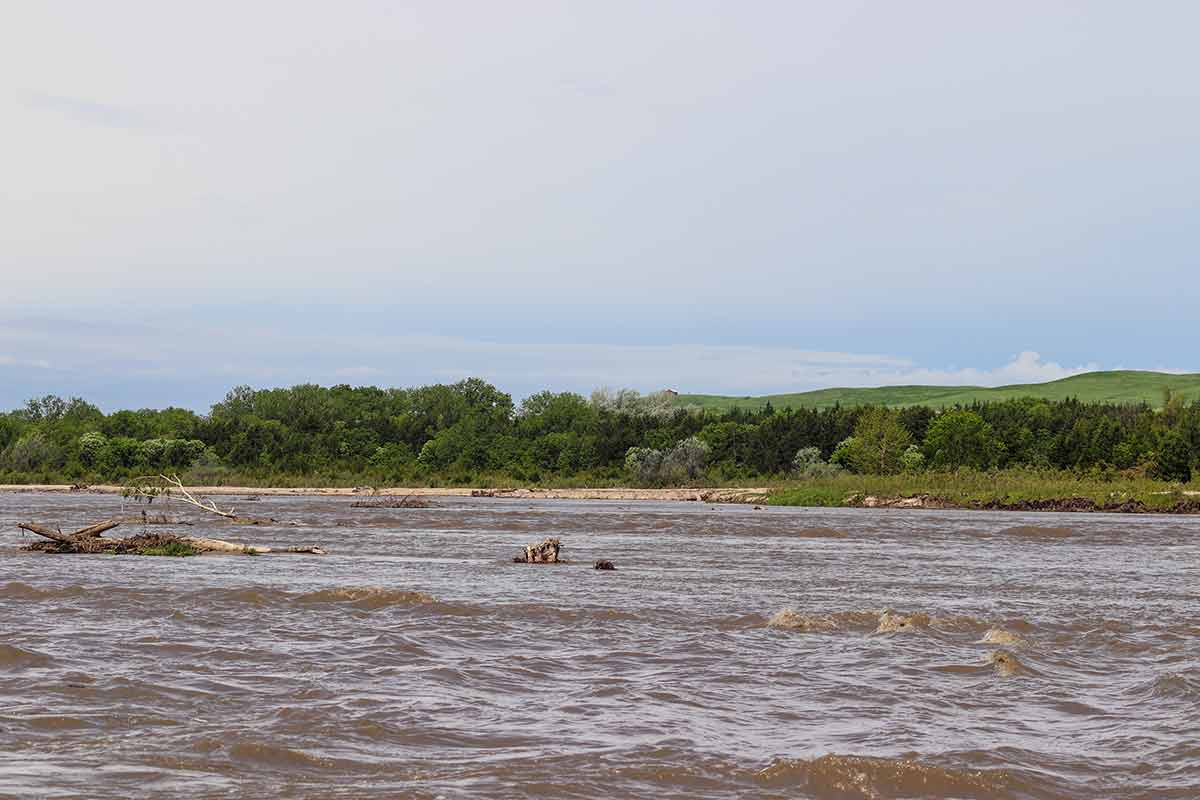
Hike to Fort Falls
There are around 200 waterfalls along the gorgeous Niobrara River, the most notable of which is the 45-foot (14-m) tall Fort Falls, highlighted by a picturesque 1.0-mile (1.6-km) hike.
Other smaller waterfalls also exist along the MacAllister Nature Trail.
Shoot Winter Photography
During the winter, the Niobrara River is a photographer’s paradise.
There are spots along the river where photographers can find stunning winter landscapes, natural phenomena, wildlife, canyons, waterfalls and angles to take amazing photographs.
Float the Niobrara River
Float along the Niobrara through six habitats, waterfalls and under historic bridges to get a close-up view of the river’s splendour.
Bike the Cowboy Trail
The historic train bed that once ran through Valentine, Nebraska, and the Sandhills has been repurposed into a trail known as the Cowboy Trail.
Many hikers and bikers covet the views of the Niobrara National Scenic River from this 148-foot (45 m) historic bridge.
How To Get There
Most visitors begin their journey in Valentine, Nebraska, 76 miles (122 km) south of I-90 (Murdo, SD Exit) on Hwy 83 or 130 miles (209 km) north of I-80 (North Platte, NE Exit) on Hwy 83.
3- Missouri National Recreational River
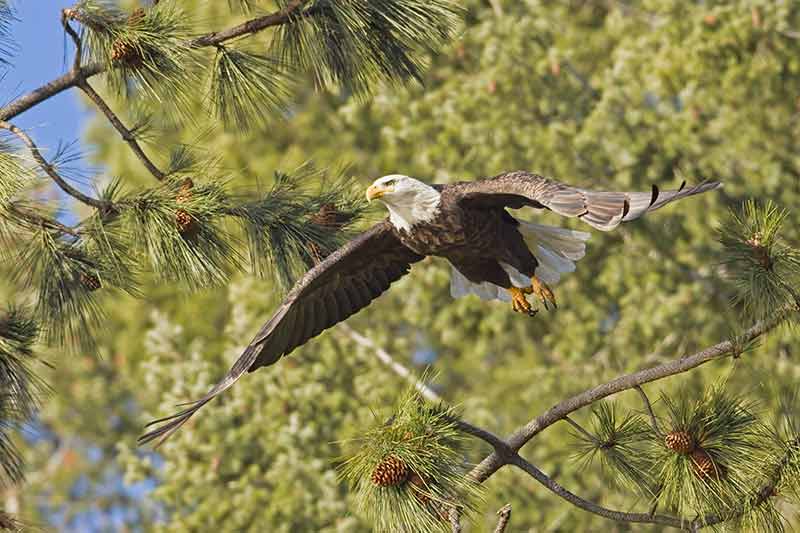
The Missouri National Recreational River runs along the Nebraska-South Dakota border.
A 59-mile (95 km) stretch of the Missouri River was designated in 1978 between Gavins Point Dam and Ponca State Park.
In 1991, a 39-mile (63-km) stretch was added to the designation between Fort Randall Dam and Niobrara, Nebraska.
These two stretches of the longest river in North America combine to make up the Missouri National Recreational River.
They are among a few sections of the Missouri River that remain in a relatively natural state and are home to abundant wildlife, including amphibians, birds, fish, mammals, and reptiles.
The Missouri National Recreational River also has a diverse range of ecosystems, including open grassland, prairie, and river forest, as well as a small collection of native wildflowers.
The natural beauty of the Missouri National Recreational River can be seen throughout, and its sprawling boundaries provide an abundance of recreational opportunities.
Things To Do
Bird-Watching
The Missouri River ecosystem serves as an important migration route for migrating birds such as the American Bald Eagle.
Birdwatchers may also get the chance to spot the Piping Plover and the Least Tern, two threatened and endangered species in the park.
Boating
Boaters are provided with the opportunity to enjoy the stunning scenery and a variety of river activities in the park.
The Missouri River Outdoor Recreation Access Guide includes public access points for fishing, hunting, boating, and river access on the Nebraska side of the park.
Camping
Along the Missouri National Recreational River, the Bow Creek, Green Island, and Goat Island Recreation Areas provide primitive, Leave-No-Trace camping.
Canoeing and Kayaking
Exploring the river by kayak or canoe is a terrific way to see the park and what Lewis and Clark could have encountered during their expeditions in 1804 and 1806.
Hiking and Biking
The Missouri National Recreational River collaborates with numerous agencies and organisations at the federal, state, and local levels to provide visitors with a wide range of hiking and biking opportunities.
How To Get There
The National Park Service headquarters is at 508 East Second Street in Yankton, South Dakota.
4- Agate Fossil Beds National Monument
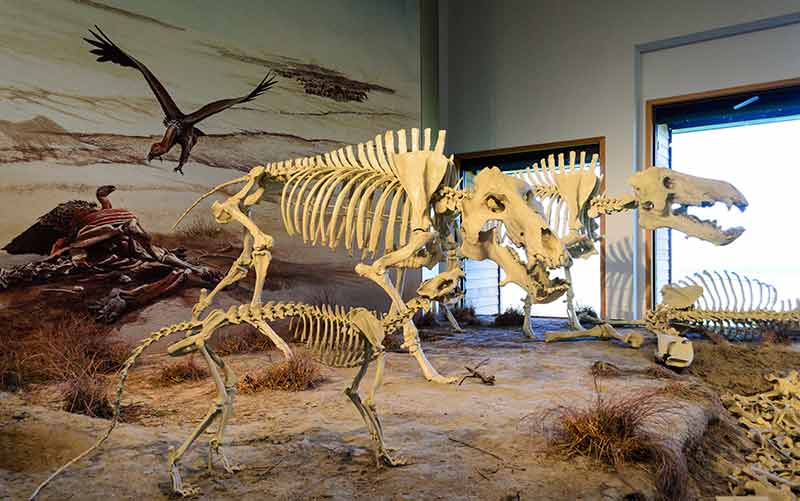
The Agate Fossil Beds is one of the world’s most well-preserved paleontological wonders.
In the early 1900s, paleontologists discovered complete skeletons of extinct Miocene mammals in Nebraska hills.
These species had previously only been known from fragments.
The 3,058-acre (1,238 ha) park, which has been preserved since 1965, was designated a national monument in 1997.
The main highlights of the monument include the fossils, the James H. Cook collection, and the Niobrara River wetlands, which are mostly found in the Niobrara River valley, as well as on Carnegie Hill and University Hill.
Most of the terrain is made up of plains covered in grass.
Prairie sand reed, blue grama, little bluestem, needle and thread grass, as well as the wildflowers lupin, spiderwort, western wallflower, and sunflowers, can all be found on the site.
Agate is home to a wide range of animals, including rabbits, deer, coyotes, and bats, as well as amphibians and snakes, though they are not always easy to spot.
Aside from the animals that live at Agate all year, there are migratory birds that come here to breed.
Things To Do
Travel Back 23 Million Years
Visitors can view life-size representations of extinct creatures such as the beardog, Moropus, and Dinohyus, which roamed the American High Plains about 23 million years ago.
One of the most popular historical discoveries is the “Devil’s Corkscrews”, Miocene age corkscrew-shaped burrows in the Earth’s core dug by now-extinct beavers called Palaeocastor.
Explore Artifacts at the Museum
The most amazing collection of Native American artifacts collected by James H. Cook is on display for visitors.
Other exhibits include Crazy Horse’s whetstone, American Horse’s war club from the Fetterman Fight, and artifacts handed to James Cook by the Lakota, Chief Red Cloud, when they came to see him at the Agate Springs Ranch.
Go Hiking
Visitors can hike and explore two trails in the park: the 1-mile (1.6 km) Daemonelix Trail, which exhibits paleosols (fossilised grassland soils) and old dunes.
Visitors can also explore the historic dig sites, where the first fossils were discovered, through the 2.8-mile (4.5-km) Fossil Hills Trail.
How To Get There
From US 20, travel 22 miles (25 km) south of Harrison, Nebraska on State Highway 29, then 3 miles (4.8 km) east on River Road (paved).
From US 26, travel 34 miles (54.7 km) north of Mitchell, Nebraska on State Highway 29, and then 3 miles (4.8 km) east on River Road (paved). From State Hwy 71, travel 25 miles (40 km) west on the unpaved section of River Road.
5- Homestead National Historical Park
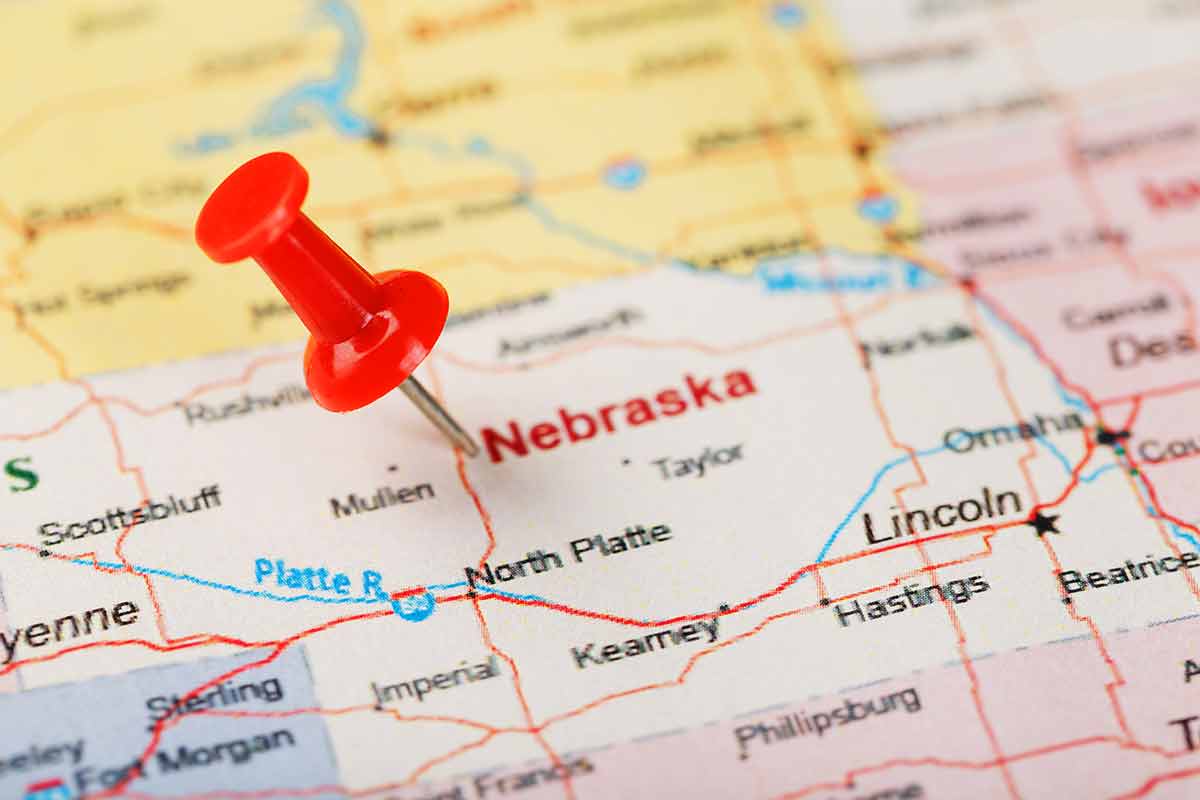
Homestead National Historical Park, formerly known as the Homestead National Monument of America until 2021, commemorates the United States’ westward expansion through the Homestead Act of 1862.
These laws allowed any eligible person to claim up to 160 acres (65 ha) of federally owned land in exchange for living on the property for at least five years, cultivating it, and improving it.
Many men and women, including families, immigrants, single women, and freed slaves, were given a fair chance to make claims in one of the most significant and enduring events in the United States’ westward expansion.
Homesteaders established settlements and farms and promoted industrial development.
In the end, 270,000,000 acres (109,265,123 ha) were transferred from public to private ownership under the Homestead Act.
The 211-acre (85-ha) site, designated a national historic park in 2021, has some of the first acres successfully claimed under the Act, just outside Beatrice.
The area has rolling hills, temperate grassland, deciduous forest, tall grass prairie and riparian woodland.
Over 100 bird species can be seen within the park’s tallgrass prairie and woodland habitats.
Both of these areas have trails that wind through them, providing opportunities for birdwatching and spotting white-tailed deer, beavers, rabbits, squirrels and coyotes.
Things To Do
Visit the Homestead Heritage Center
The Homestead Heritage Center is a multipurpose facility that demonstrates the true significance of the Homestead Act of 1862 to visitors of all ages.
Visit the Homestead Education Center
Visitors to the Homestead Education Center can learn more about homesteading by engaging in hands-on arts and crafts projects, historical demonstrations, and science experiments, as well as exploring farm implements.
Freeman School
The Freeman School is a reminder of the importance of the schoolhouse in the history of the prairie frontier.
The school, originally known as School District Number 21, served as a centre of instruction for prairie students from 1872 to 1967.
Daniel Freeman Homestead
The first homestead claim under the Homestead Act of 1862 was most likely Daniel Freeman’s homestead claim in Gage County, Nebraska.
The claim is now a part of the American Homestead National Monument.
Daughters of the American Revolution Monument
The first physical monument on Daniel Freeman’s land was built by the Daughters of the American Revolution (DAR).
In 1925, the DAR placed a stone memorial on Daniel Freeman’s property to commemorate the site of the first homestead filed under the Homestead Act of 1862 and to preserve the story of homesteading.
Hike the Nature Trails
The Homestead National Monument of America offers more than 3 miles (4.8 km) of trails through the expansive tallgrass prairie and quiet bur oak woodland for hiking, cross-country skiing, and nature study.
How To Get There
The park is 5 miles (8 km) west of Beatrice on State Highway 4. Take U.S. 136 from the U.S. 77 and U.S. 136 intersection in downtown Beatrice, approximately 1.2 miles (2 km) west.
Turn right onto Nebraska Highway 4 and follow the signs. After the road has curved west and you have travelled 4 miles (6.4 km), you will enter Homestead National Historical Park and see signs for the different structures in the park.
If you love exploring national parks, you might like to read:
- Wyoming National Parks Guide
- Nevada National Parks Guide
- Michigan National Parks Guide
- 5 Maine National Parks
- New Hampshire National Parks Guide
- 25 National Parks in Canada
- 17 National Parks in Argentina
- Tasmania National Parks
- 20 National Parks in Mexico
- 18 New Mexico National Parks
- 18 National Parks in Massachusetts
- 17 Colorado National Parks
- 4 Indiana National Parks
- 5 Nebraska National Parks
- 30 Virginia National Parks
- 9 New Jersey National Parks
- 8 National Parks in Arkansas
- 8 Alaska National Parks
- 13 Tennessee National Parks
- 6 National Parks in Louisiana
- 5 Illinois National Parks
- 7 National Parks in Oklahoma
- 7 National Parks in South Dakota
- 12 Alabama National Parks
- 5 North Dakota National Parks
- 8 National Parks in West Virginia
- 20 National Parks in Arizona
- 11 National Parks In Florida
- 8 Hawaii National Parks
- 6 National Parks In Idaho
- Texas National Parks Guide
- 9 California National Parks
- 11 National Parks In Georgia
- 7 National Parks In Missouri
- 5 National Parks in Minnesota
- 7 National Parks In Kentucky
- 8 National Parks In Montana
- 15 National Parks In Washington State
- 8 South Carolina National Parks
- 12 North Carolina National Parks
- 4 Wisconsin National Parks
- 20 National Parks In India
- 11 Oregon National Parks
- 5 Connecticut National Parks
- 27 National Parks In New York State
- 4 Iowa National Parks
- Yosemite National Park
- Zion National Park
- 21 National Parks in Pennsylvania
- 9 National Parks in Mississippi
- 5 National Parks in Rhode Island
- 9 National Parks in Taiwan
- 20 East Coast National Parks
- Guide To Winter in Yellowstone National Park
Plan Your Trip

Rent A Car – Find the best car rental rates at Discover Cars. They compare car hire companies to provide you with the best deal right now.

Find A Hotel – If you’re curious about this article and are looking for somewhere to stay, take a look at these amazing hotels.
